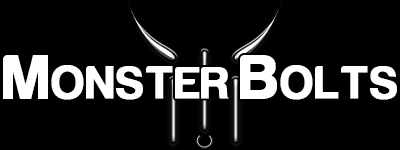Not all self-tapping screws are created equal. Understanding the difference between thread-cutting, thread-forming, and thread-rolling screws is key to building stronger joints, avoiding stripped holes, and picking the right pilot size. This guide breaks down the major types — from Type 1 through Type 25, PT / EJOT-style, and Taptite® alternatives — with charts and application tips to help you choose confidently.
1. Thread-Cutting Screws
Thread-cutting screws have flutes cut into their threads that remove material as they drive, creating mating threads in wood, plastic, or metal. They are ideal where you need a strong, reusable metal thread and can tolerate some chip generation.
| Type | Description | Typical Material | Applications |
|---|---|---|---|
| Type 1 | Single flute; general-purpose thread cutting | Aluminum, soft metals, wood, plastics | Electrical boxes, light metal |
| Type F | Multiple cutting flutes; machine-screw thread | Castings, mild steel, aluminum | Metal-to-metal assemblies, tapped‐hole replacement |
| Type 23 | Auger-point flute, ideal for brittle materials | Die-cast metals, plastics | Thin die-cast housings, electronics |
| Type 25 | Type 23 + chip-clearing thread; excellent self-starting | Plastics, light alloys | Thermoplastics, wood/plastic composites |
2. Thread-Forming Screws (PT / EJOT® Style)
Thread-forming screws don’t cut material — they displace it. Their lobed thread forms mating threads in plastics or thin metals with minimal debris, creating a tight fit and high pull-out strength. Popular examples are PT / EJOT® screws for thermoplastics and thin sheet.
3. Thread-Rolling Screws (Taptite® Alternatives)
Thread-rolling screws (e.g., Taptite®-style trilobular screws) combine forming and rolling action to create machine-quality threads in untapped steel or aluminum. They reduce drive torque while improving resistance to loosening, making them excellent for high-volume production.
Pilot Hole Recommendations (Quick Reference)
| Screw Type | Material | Pilot Hole Guidance |
|---|---|---|
| Thread-Cutting | Metals, wood, plastic | ~75–85 % of screw diameter (allows chip clearance) |
| Thread-Forming (PT) | Thermoplastics | ~85–90 % of screw diameter (depends on plastic hardness) |
| Thread-Rolling (Taptite / Trilobular) | Steel, aluminum | ~90–95 % of screw diameter (close fit for thread forming) |
Note: Always verify pilot sizes against manufacturer data and application tests.
Installation & Application Tips
- Use lubrication when driving into harder metals to reduce friction and avoid thread galling.
- Use pilot holes
- For plastics, avoid overtightening — rely on thread engagement, not excessive torque.
- For thread-rolling screws, use impact drivers sparingly; consistent torque gives better thread quality.
FAQ: Thread-Cutting vs. Forming vs. Rolling
Which screw type is strongest?
Thread-rolling screws typically create the strongest reusable threads, especially in metal, followed by thread-forming in plastic, then thread-cutting in soft materials.
Are PT screws the same as self-tapping screws?
PT screws are a specific style of thread-forming screw optimized for thermoplastics. All PT screws are self-tapping, but not all self-tapping screws are PT.
Can I use thread-forming screws in metal?
Yes, in thin sheet metal — but for thicker metals, thread-cutting or thread-rolling screws are usually better.
Why do my screws strip out plastic?
Likely the pilot hole is too large, the screw is overtightened, or you’re using the wrong thread style. PT screws reduce stripping in thermoplastics.
Do I need washers with these screws?
Flat washers are useful to spread load and protect surfaces; split lock washers can help under vibration. See our washer guide for more.


